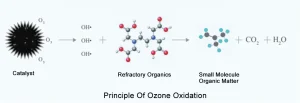The total number of colonies refers to the total number of bacterial colonies grown from the test sample per gram (per milliliter) under certain conditions (such as aerobic conditions, nutritional conditions, pH, culture temperature and time, etc.). According to the national standard method, that is, the total number of bacterial colonies that can grow on the ordinary nutrient agar plate when incubated at 37 ℃ for 48h under aerobic conditions, so anaerobic or microaerobic bacteria, bacteria with special nutritional requirements and non mesophilic bacteria are difficult to reproduce and grow because the existing conditions cannot meet their physiological needs. Therefore, the total number of colonies does not mean the total number of all bacteria in practice. The total number of colonies does not distinguish the types of bacteria, so it is sometimes called the number of miscellaneous bacteria, aerobic bacteria, etc.
The determination of total bacterial count is used to determine the degree of bacterial contamination and the hygienic quality of food. It reflects whether the food meets the hygienic requirements in the production process, so as to make appropriate hygienic evaluation on the tested samples. To some extent, the total number of bacterial colonies indicates the quality of food hygiene.

Total Colony Count - Unit
The colony forming unit is called CFU. CFU means the number of colony forming bacteria, not equal to the number of bacteria. (For example, if two identical bacteria are close to each other or stick together, the two bacteria will form a colony after cultivation, which is two bacteria, one CFU). The plate counting method is often used to count the total number of colonies. After culture, we can count the number of colonies growing on the plate, so as to calculate how many colonies can be cultured per milliliter or per gram of the sample to be tested, and then report it in CFU/ml or CFU/g.
Total Colony Count - Hazard
The total number of bacterial colonies in food seriously exceeds the standard, which indicates that the hygiene condition of its products cannot meet the basic hygiene requirements, which will damage the nutrition of food, accelerate the deterioration of food, and make food lose its edible value. Consumers who eat food with excessive microorganisms are likely to suffer from intestinal diseases such as dysentery, which may cause vomiting, diarrhea and other symptoms, endangering human health and safety.
However, it needs to be emphasized that there is an essential difference between the total number of colonies and pathogenic bacteria. The total number of colonies includes pathogenic bacteria and beneficial bacteria. The pathogenic bacteria are mainly harmful to the human body. These bacteria will damage the normal colony environment in the intestinal tract. Some of them may be killed in the intestinal tract, and some of them will stay in the body to cause diarrhea, damage the liver and other body organs. The beneficial bacteria include lactic acid bacteria often mentioned in yogurt. However, if the total number of bacterial colonies exceeds the standard, it also means that the chance of exceeding the standard of pathogenic bacteria is increased, which increases the chance of harming human health.
There are many reasons for exceeding the limit of total bacterial count: raw materials are not strictly controlled; Sterilization control is not strict; Process documents cannot be strictly implemented during processing; The environmental equipment and facilities in the production site are not completely disinfected; The quality of employees is low and they do not pay attention to personal hygiene; Improper storage environment and poor sealing of packages; The cleanliness of food packaging appliances is not enough.

How many concentration ( ppm ) ozone can be sterilized:
Ozone is known as a broad-spectrum, efficient, fast, safe and non secondary pollution germicidal gas, which can kill bacterial spores, viruses, fungi, etc., and can destroy botulinum toxin. The structure of microbial membrane is destroyed by the oxidation of oxygen atoms to achieve bactericidal effect. It can kill fruits, vegetables, Icelandic penicillin bacteria, black mutant spores, natural bacteria, Neisseria gonorrhoeae, etc. It can also kill infectious viruses such as A and hepatitis B, and it can also remove pesticide residues in fruits and vegetables and toxins in residues of washing products. Its bactericidal mechanism is that the cell membrane composition of bacteria is damaged due to its action on the cell membrane, resulting in metabolic barriers that inhibit its growth until death; The mechanism of pesticide degradation is realized by directly destroying its chemical bond.
[Effect of ozone on bacterial propagules]
When the temperature is 15 ℃, humidity is 73%, and ozone concentration is 0.08-0.6ppm, the killing rate will reach 99.9% within 30 minutes; Ozone can kill 100% Escherichia coli, 95.9% Staphylococcus aureus, 89.8% Pseudomonas aeruginosa, 99.99% Staphylococcus albus in the air; The ozone gas is injected into the phosphate buffer solution contaminated with Staphylococcus aureus, Escherichia coli, Pseudomonas fluorescens, Salmonella typhimurium, Shigella flexneri and Vibrio cholerae. After 15 seconds of action, all the above bacteria are killed; The killing rate of Escherichia coli and Staphylococcus aureus reached 100% when the ozone solution with concentration of 0.3mg/L acted for 1 minute.
































